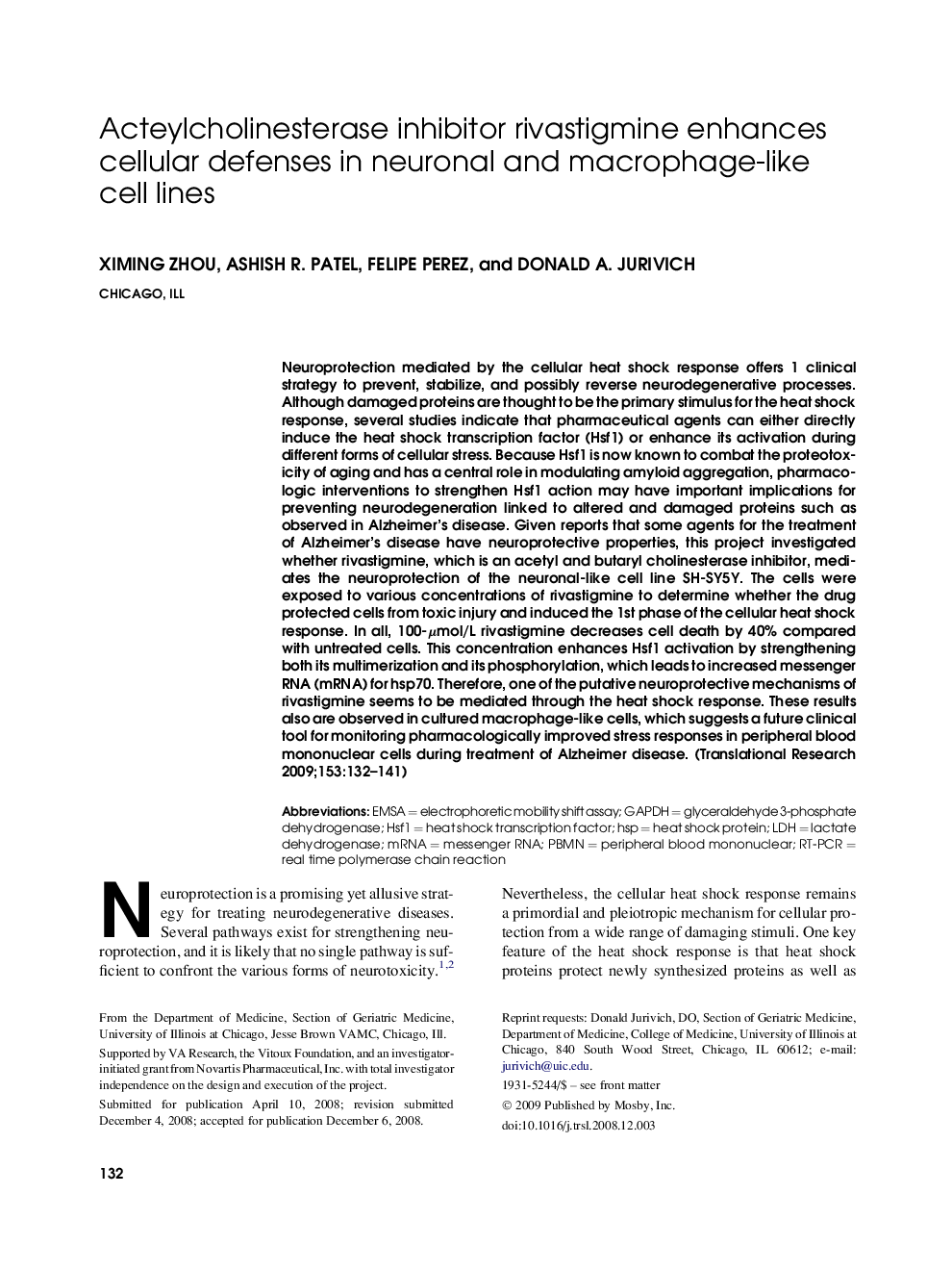| کد مقاله | کد نشریه | سال انتشار | مقاله انگلیسی | نسخه تمام متن |
|---|---|---|---|---|
| 3841210 | 1247965 | 2009 | 10 صفحه PDF | دانلود رایگان |

Neuroprotection mediated by the cellular heat shock response offers 1 clinical strategy to prevent, stabilize, and possibly reverse neurodegenerative processes. Although damaged proteins are thought to be the primary stimulus for the heat shock response, several studies indicate that pharmaceutical agents can either directly induce the heat shock transcription factor (Hsf1) or enhance its activation during different forms of cellular stress. Because Hsf1 is now known to combat the proteotoxicity of aging and has a central role in modulating amyloid aggregation, pharmacologic interventions to strengthen Hsf1 action may have important implications for preventing neurodegeneration linked to altered and damaged proteins such as observed in Alzheimer's disease. Given reports that some agents for the treatment of Alzheimer's disease have neuroprotective properties, this project investigated whether rivastigmine, which is an acetyl and butaryl cholinesterase inhibitor, mediates the neuroprotection of the neuronal-like cell line SH-SY5Y. The cells were exposed to various concentrations of rivastigmine to determine whether the drug protected cells from toxic injury and induced the 1st phase of the cellular heat shock response. In all, 100-μmol/L rivastigmine decreases cell death by 40% compared with untreated cells. This concentration enhances Hsf1 activation by strengthening both its multimerization and its phosphorylation, which leads to increased messenger RNA (mRNA) for hsp70. Therefore, one of the putative neuroprotective mechanisms of rivastigmine seems to be mediated through the heat shock response. These results also are observed in cultured macrophage-like cells, which suggests a future clinical tool for monitoring pharmacologically improved stress responses in peripheral blood mononuclear cells during treatment of Alzheimer disease.
Journal: Translational Research - Volume 153, Issue 3, March 2009, Pages 132–141